Center for Justice & Economic Advancement
Normalizing Education Resource Center
Data Use Agreements
Sandra Staklis, RTI International (Winter 2024)
Postsecondary education programs in prisons collect data on their students to inform program planning, assess students’ academic progress and outcomes, and meet institution, government, and funder reporting requirements. Also, programs applying to the U.S. Department of Education to become an approved prison education program (PEP) must include documentation in their application showing that their postsecondary institution has entered into an agreement with the oversight entity (typically a state department of corrections [DOC]) to obtain data on the transfer and release dates of incarcerated individuals.[1] To have consistent access to relevant DOC data on students who are incarcerated, especially if the data are not public and use is restricted, postsecondary institutions should establish data use agreements (DUAs), also known as data sharing agreements (DSAs), with their DOC partners.
About JFF's Language Choices
Jobs for the Future strives to use equitable and inclusive language in all of our published content. Sometimes we share materials like these prepared by other organizations whose language choices differ from our own. In those cases, we use their terms to preserve accuracy. See our Language Matters Guide to learn more about the terms we use when we’re writing about education and employment programs for people with records of arrests, conviction, or incarceration.
-
What Data Do DOCs Collect?
For individuals who are incarcerated, DOCs collect demographic information such as gender, age, and race/ethnicity, and education and training information, including prior educational history, attainment of a high school credential, and participation in cognitive and vocational training programs. The data also include details about their incarceration, such as admission date, expected date of release, release community, employment, transfers and transfer locations, risk and needs scores, and records of disciplinary infractions that may affect program eligibility, participation, and completion. DOCs may also have access to information collected by other state agencies (e.g., community corrections and labor), such as employment after release.
-
What Is a DUA?
A DUA is a contractual document that governs the exchange and use of data among agencies and organizations. DUAs can be initiated by the postsecondary institution or DOC but should involve the postsecondary institution’s institutional research office. On the DOC side, DUAs may involve inputs and approvals from research, information technology, and compliance offices, as well as legal representatives.
A DUA specifies what data will be shared and requirements around how the data are managed, including:
-
how the data can be used and shared and by/with whom;
-
data security measures that must be used to prevent an unauthorized use or disclosure;
-
requirements for reporting any unauthorized use or disclosure to the data provider;
-
the schedule for data sharing; and
-
the timeframe that the receiving institution is permitted to retain the data.
Once a DUA is in place, a DOC might share data files on a one-time or regular reporting schedule or provide data system access to a postsecondary institution staff member who, following training, can access data in accordance with the agreement.
-
Establishing a DUA with a DOC
Because processes for accessing data vary by DOC, the first step toward establishing a DUA is to learn about the process and requirements by meeting with the director of the DOC research office. Information about DOC research offices can typically be found on DOC websites. In preparation for the meeting, it can be helpful to collect information that will be needed for the DUA, such as:
- The types of data that will be requested. For program management and assessing student outcomes and equity, relevant information may include students’ prior education, transfers, and release dates.
- Whether identifying information is needed, such as names, birth dates, and unique identification numbers to match the DOC data to data from your institution.
- A brief description of how the data will be used, including the research questions and analyses of interest.
- Who will have access to the data, ideally using job titles rather than staff members’ names in case of staff turnover.
- Whether the request is for one-time or multiple data deliveries and the schedule for the data deliveries and destruction procedures once the data are no longer needed. This information might include instructions by data type, such as sharing transfer and release data within a certain time frame so that a financial aid office can take needed actions.
- How the data will be securely transmitted to your program and how it will be stored and protected once in your possession.
|
How Can DOC Data Be Used? |
|
Data from the New York State Department of Corrections and Community Supervision have helped researchers from the State University of New York’s Office of Higher Education in Prison (SUNY) investigate the effects of carceral conditions on student success in postsecondary programs in prison. The office’s recent analysis of student outcomes found lower graduation rates among students who experienced transfers across facilities and among students with shorter sentences, who rarely continued their education after release. The evidence supports the study’s recommendations for greater cross-facility coordination among postsecondary education programs in prison and for connecting students to college in the communities that they return to. |
DUAs can take a few weeks to months to establish because review by multiple offices on both sides is typically necessary and staff capacity may be limited. DOCs may have a preferred DUA template or request that the postsecondary institution supply one. If the DOC is new to data sharing, their data analysts may also need time to establish procedures and determine the programming required to create the data files. To avoid duplication of effort, some DOCs prefer that postsecondary institutions coordinate DUA development through a consortium or data working group or create one DUA that is used by all partners, which may require additional work up front. For example, one DOC in a state with a Ready for Pell grantee is exploring the possibility of creating a single data sharing platform for its postsecondary partners that will be governed by a data trust agreement similar to the Virginia Data Governance Framework.
Postsecondary institutions should keep in mind that flexibility may be needed to meet DOC requirements, particularly if the data requested are not public. For example, if a DOC is unwilling to share identifying information, the DOC may be able to instead receive identifying data from the college, conduct the match, and share deidentified information back.
[1] Pell Grants for Prison Education Programs; Determining the Amount of Federal Education Assistance Funds Received by Institutions of Higher Education (90/10); Change in Ownership and Change in Control, 87 FR 68900 (proposed November 11, 2022). To access the text of the legislation and information on regulations for Pell Grants for Prison Education Programs, see https://fsapartners.ed.gov/knowledge-center/topics/prison-education-programs.
-
Additional Resources
Research university websites include additional resources on DUAs, such as how-to guides and templates. For example, Tulane University, a Ready for Pell grantee, maintains a website on DUAs: https://research.tulane.edu/ott/faculty/mtas-duas. Other helpful resources are DOC websites, which typically include research and data resources that postsecondary institutions can use to understand DOC policies, procedures, and available data. The following are examples of DOC websites in states with Ready for Pell grantees:
-
Massachusetts: https://www.mass.gov/how-to/submit-an-outside-research-proposal
-
Oregon: https://www.oregon.gov/doc/research-and-requests/pages/home.aspx
-
Texas: https://www.tdcj.texas.gov/divisions/eas/external_research.html
-
Wisconsin: https://doc.wi.gov/Pages/DataResearch/DAIPrimaryProgramming.aspx
The U.S. Department of Education Federal Student Aid Office’s Knowledge Center provides information on federal legislation related to Pell Grant reinstatement, as well as a link to the Application for Approval to Participate in the Federal Student Financial Aid Programs: https://fsapartners.ed.gov/knowledge-center/topics/prison-education-programs.
-


